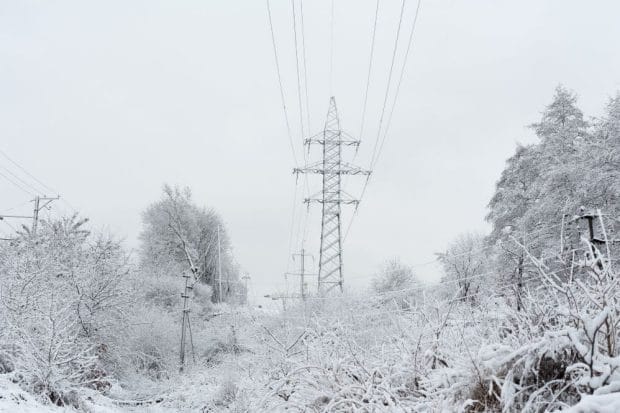Weather’s Role in Demand Forecasting for Electric Utilities
For electric utilities, accuracy in demand forecasting is not just an operational priority—it’s a cornerstone of reliability, efficiency, and cost control. Every decision around power generation, dispatch, and grid management depends on knowing when and where demand will rise or fall. And no factor drives these fluctuations more than the weather.
From a sudden heatwave spiking cooling loads to winter storms pushing heating demand through the roof, weather conditions directly shape energy consumption patterns. As the energy transition accelerates and renewable power becomes more central to the grid, this relationship has only grown more complex. Climavision’s Horizon AI suite offers utilities the tools to forecast weather—and therefore demand—more accurately than ever before.

In Summary
- Weather is the single most important driver of electricity demand, influencing everything from daily cooling loads to storm-driven grid disruptions.
- Traditional demand forecasting models often miss local variations and short-term severe weather signals, leaving utilities exposed to risk.
- Horizon AI Point provides hyperlocal forecasts with machine learning, sensor integration, and bias correction for precise, location-specific demand predictions
- Horizon AI HIRES delivers high-resolution, grid-wide insights that capture terrain-driven weather and severe events, enabling better dispatch and renewable integration
- Together, Horizon AI Point and HIRES empower utilities to improve demand accuracy, cut operational costs, enhance reliability, and proactively manage the grid.
How Weather Influences Power Demand
Weather shapes demand in ways that are both predictable and highly disruptive.
- Temperature Extremes: Heatwaves drive record-breaking cooling demand, while cold snaps push heating loads higher than expected. Even modest deviations from average temperatures can significantly shift demand curves.
- Severe Weather Events: Hurricanes, derechos, and ice storms cause sudden load fluctuations and widespread outages that can ripple across the grid.
- Renewable Variability: Cloud cover, wind shifts, and storms alter solar and wind generation, complicating the balance of supply and demand.
- Localized Effects: Terrain, lakes, or urban heat islands create microclimates that traditional models often miss—leading to inaccurate demand projections at the local level.
The Limits of Traditional Forecasting
Despite its importance, most demand forecasting still relies heavily on broad, generalized weather models. These models often:
- Miss local variations in weather conditions.
- Provide limited resolution, especially for severe or short-term events.
- Restrict planning horizons to a few days, leaving utilities reactive instead of proactive.
The result: increased reliance on costly backup power, exposure to volatile wholesale markets, and a greater risk of outages or instability.
Horizon AI Point: Hyperlocal Forecasting for Precision Demand Modeling
Climavision’s Horizon AI Point delivers forecasts at the hyperlocal scale, tailored to the exact conditions utilities face in their service territories.
- Granular Accuracy: Point forecasts provide weather predictions down to a specific location—capturing microclimates and localized demand drivers.
- Machine Learning & Sensor Data: The system blends multiple models, applies AI-driven bias correction, and incorporates local sensor networks for unmatched precision.
- Demand Forecasting Use Case: Hyperlocal forecasts of temperature, storms, and weather events fine-tune demand projections, helping utilities prepare for localized surges or dips in usage.
- Operational Benefits: Utilities can schedule maintenance during favorable weather windows, reduce disruption, and take proactive steps to protect assets before a storm hits. By bridging the gap between general forecasts and local conditions, Horizon AI Point minimizes forecasting errors that directly impact demand planning.
Horizon AI HIRES: High-Resolution Forecasting for Grid-Wide Impacts
While Horizon AI Point addresses hyperlocal precision, Horizon AI HIRES takes forecasting to the next level with unmatched spatial resolution across entire service regions.
- High Resolution: A 2 km CONUS domain with optional 0.67 km sub-domains captures terrain-driven, meso-scale, and severe weather events with clarity.
- Advanced Physics & Proprietary Data Assimilation: Custom physics schemes, radar and satellite integration, and real-time vegetation inputs result in more accurate forecasts of storms, convection, and precipitation.
- Grid Stability Use Case: With HIRES, utilities can anticipate renewable production fluctuations, optimize power dispatch, reduce reliance on expensive backup power, and maintain a stable grid during severe weather.
Case studies highlight HIRES’ ability to outperform traditional models, from accurately forecasting derechos in Houston and Chicago to providing early signals for hurricanes and dense fog events. For utilities, this level of detail means stronger confidence in demand projections and better operational planning.
The Combined Advantage: Local to System-Wide Insight
Together, Horizon AI Point and HIRES provide utilities with a comprehensive forecasting advantage:
- Hyperlocal Precision: Demand modeling tuned to specific service areas.
- Regional Awareness: Anticipating larger system-wide weather events that impact the grid.
- Integration Ready: Forecasts can be delivered via APIs or visual dashboards, making it easy to layer Climavision’s insights into existing demand forecasting workflows.
This combined approach allows utilities to plan confidently—from hour-by-hour operational decisions to multi-day strategies for grid stability.
The Payoff for Utilities
Adopting advanced weather forecasting solutions like Horizon AI Point and HIRES unlocks tangible benefits:
- Improved Demand Accuracy: Reduce the cost of over- or under-estimating demand.
- Lower Operational Costs: Minimize reliance on high-cost backup generation.
- Enhanced Reliability: Maintain grid stability and customer trust, even during extreme weather.
- Better Renewable Integration: Balance clean energy generation with real-time demand.
- Strategic Advantage: Move from reactive responses to proactive, data-driven decisions.
The Future of Demand Forecasting
Weather is the most critical—and most unpredictable—factor in energy demand. For utilities navigating today’s volatile energy landscape, traditional forecasting tools are no longer enough.
Climavision’s Horizon AI Point and HIRES models give utilities the hyperlocal and high-resolution forecasts they need to stay ahead of demand, protect assets, and build a more reliable, efficient, and resilient grid.
Ready to see how advanced weather forecasting can transform your demand planning?





